Discover Norway: a land of stunning landscapes, rich history, and unique traditions. Here are some fun Norway facts to better explore the beauty and intrigue of this Scandinavian country.
The fjords, mountains and northern lights of Norway are known throughout the world. As is the “capitalism with a conscience” philosophy. But other than the obvious, how much do you really know about this Scandinavian country?
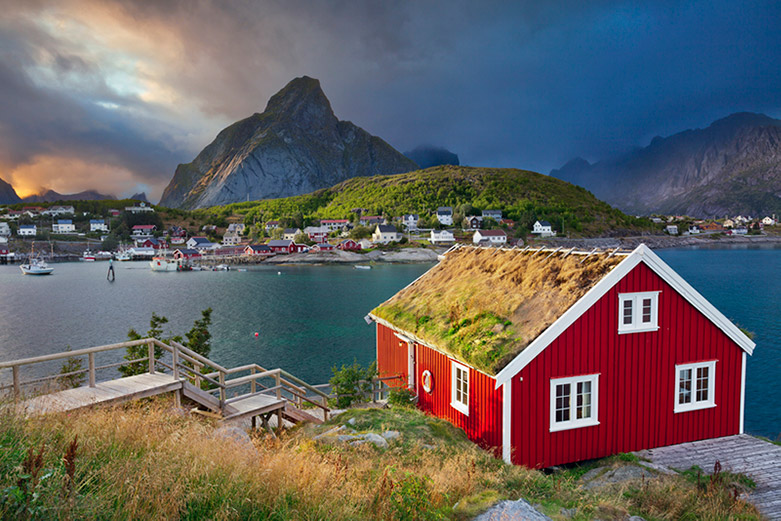
Whether you're preparing for a quiz night or you just want to impress your friends with some random knowledge, these Norwegian tidbits are just what you need!
Grab a pen, get comfortable, have your favourite hot drink handy. Here come the Norway facts you never knew you needed to know!
1. The world's longest road tunnel is in Norway
At an astonishing 15 miles (24.5 km) long, the Lærdal Tunnel is the world’s longest. Costing 1 billion Norwegian kroner to build (that's about USD $110 million) the tunnel connects the small communities of Lærdal and Aurland.
Its design is admired all around the world, as it incorporates features to help manage the mental strain on drivers.
Every 6km, there is a cave to separate sections of road. The lighting varies throughout the tunnel and caves to break routine and provide a varied view.
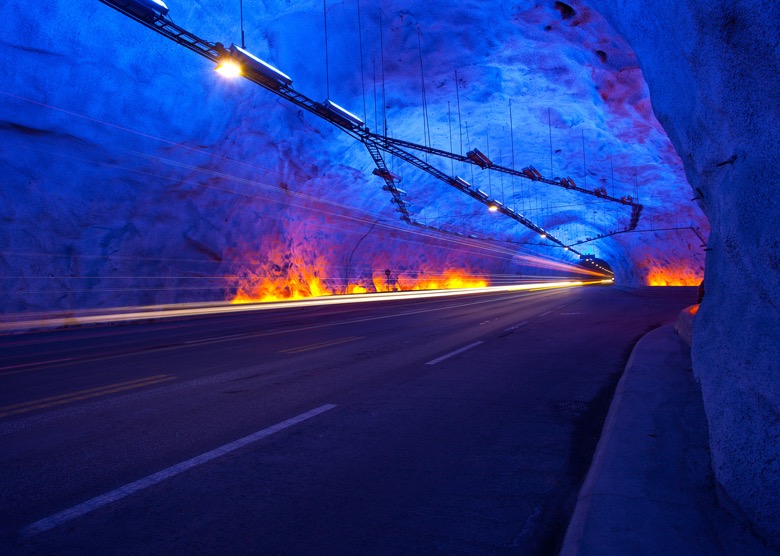
Having driven through the tunnel myself, I can attest to the importance of the design. It's a tiring drive, and the lighting makes a massive difference.
At each end, cameras count the number of cars entering and exiting. This helps ensure a swift response in the event of accident or breakdown.
If you drive through the tunnel, consider taking the ‘snow road' back. It's one of Norway's national scenic routes and a spectacular drive, albeit closed for half of the year.
2. The Nobel Peace Prize is awarded in Oslo
The Norwegian capital has been the proud venue of the Nobel Peace Prize ceremony every year (with just a few exceptions) since 1901.
The other Nobel prizes in Chemistry, Literature, Physics and Physiology or Medicine are awarded in Stockholm, Sweden.
That's due to the wishes of Alfred Nobel, the Swedish chemist who bequeathed his wealth to create the awards upon his death. No-one's quite sure why he chose Norway for the Peace Prize.
Located between the City Hall and the Aker Brygge development, the Nobel Peace Centre chronicles the fascinating history of the award, and usually has a special exhibition on the current holder of the prize. It opened in 2005.
If you've ever in Stockholm, it's worth stopping by the Nobel Centre there too, for the complete story.
3. The world's most remote island is a Norwegian territory
But it may surprise you to learn that it's not in the north! It's actually on the other side of the world. Administered by Norway since 1929, Bouvet Island in the South Atlantic Ocean is Planet Earth's most remote island.
It is located approximately 1,700km north of the coastline of Antarctica and 2,600km away from the South African coast. The closest inhabited land is the British overseas territory of Tristan da Cunha, more than 2,000km away. Tristan is also an extremely remote place, with no airport.
Norway designated the 49km² island and its territorial waters a nature reserve in the 1970s.
While no-one lives on the island, Norwegian authorities do maintain an (unmanned) weather station. This means it's easy to check the weather there from Norway, or anywhere else in the world for that matter.
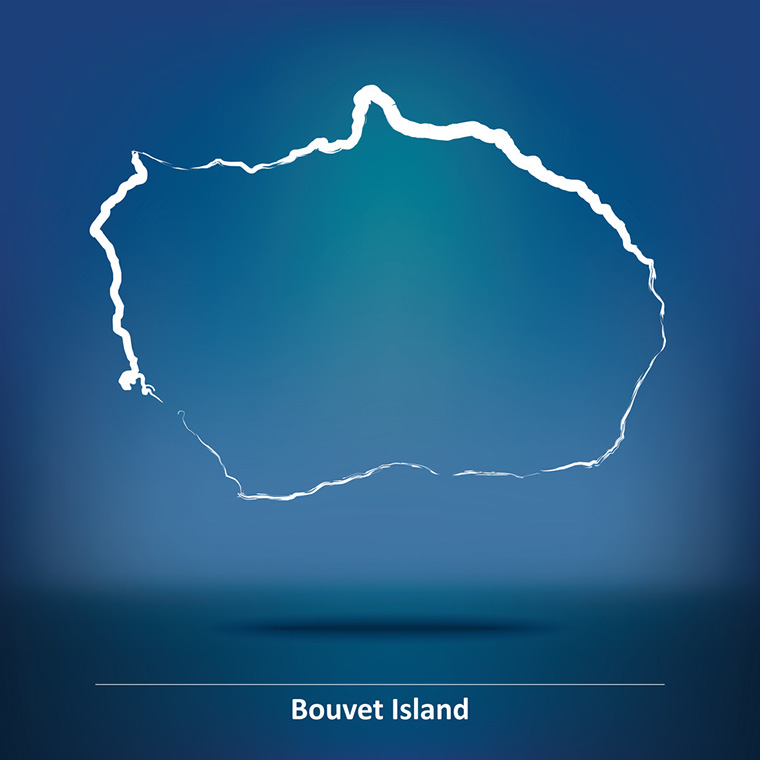
Because of Bouvet's remoteness and the lack of an airport, visiting the island is a no-go. Unless you're a scientist on a research expedition, this is one island you'll likely never get to visit.
4. Norway has a land border with Russia
This one had me scratching my head and checking a map when I first moved to Norway. Although there is just one road crossing, the Norway-Russia land border is actually 120 miles long.
The Storskog crossing on the E105 highway is the northernmost road border crossing in Europe. In September 2017, a new tunnel and bridge opened on the Norway side of the border, decreasing travel time for those crossing the border.
By the way, that's something many people do. Norwegians cross over to buy cheaper fuel for their cars, while Russians cross over to buy better quality goods in Kirkenes.
Much of the border is defined by a river and cuts through dense forest for the majority of the route. Distinctive posts coloured bright yellow on the Norway side and red-green striped on the Russian side mark the border.
It's important to pay attention if you're out hiking in these remote areas, because taking even a couple of steps to encircle the posts is illegal.
5. Kirkenes is farther east than all of Finland
In fact, the small Arctic town is as far east as Cairo. This continues to blow my mind when thinking about it and I'm rarely surprised when people doubt it! Don't believe it? Check a map!
At only 9 miles (15 km) from the Russian border, Kirkenes is one of Norway's most interesting places from a social perspective. As it's so close to the border, there is a big Russian influence.
You'll see bilingual street signs and plenty of shops advertising offers and deals primarily to Russian visitors. Because of the number of non-locals spending time in the town, English is very much a third language in this small town.
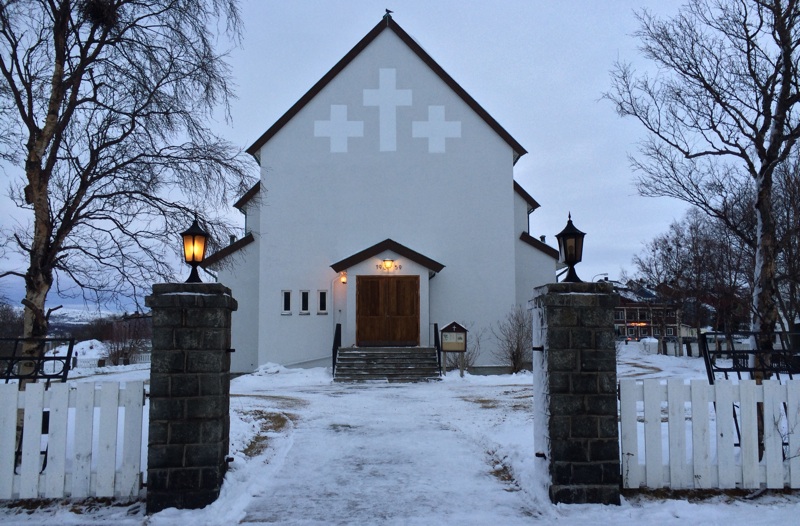
Most international visitors have heard of the name because Kirkenes is the point at which the coastal ferry “turns around” to continue its epic multi-day voyage back to Bergen.
Most international visitors continuing their journey on board have around three hours to explore the city.
Attractions of note include a World War II bunker that's open to visitors by prior arrangement, the Borderlands museum, part of Varanger museum, and the church, pictured above.
6. Norway is home to Hell
Yes, really! A little over one thousand Norwegians can say they live in Hell. The small village is within walking distance of Trondheim's international airport and even has its own train station.
The train station is in itself something of a tourist attraction. Several times I've spotted tourists snapping a photo of themselves in front of the station sign! But there're more to Hell than just the name.
Take a short walk from the station via a signed forest trial and you'll find some crude rock carvings of reindeer, believed to be around 5,000 years old. There's also a hotel and a small shopping centre, among other local facilities.
7. Norway introduced salmon sushi to Japan
While sushi is absolutely a Japanese invention, they did not use salmon in the dish until it was suggested by a Norwegian delegation in 1980's.
Despite the distance between the countries, Japan seemed a natural fit for Norwegian seafood. Japan's fish stocks were suffering from overfishing but demand from consumers was high.
The deals created all those years ago have helped to boost Norwegian seafood exports. In Japan, Norwegian salmon sushi is one of the most popular dishes, especially among younger people.
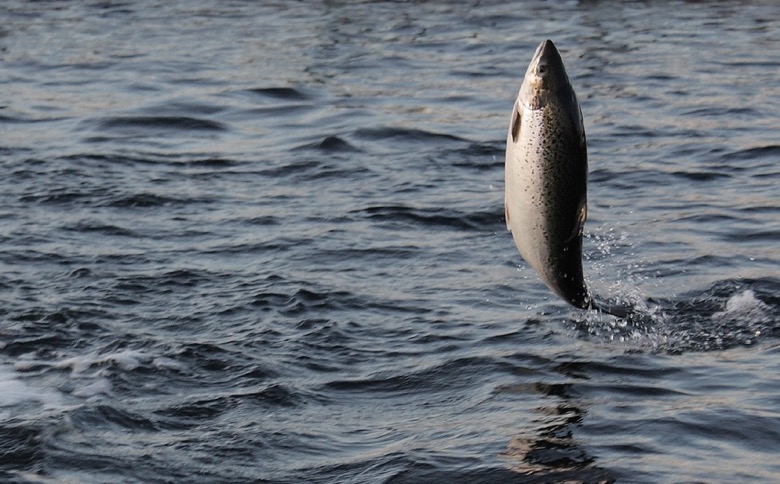
It took time to happen though, as the Japanese were originally concerned with the health impact of eating raw salmon. But they got over that, and Norwegian exports haven't looked back and seafood is now one of Norway's biggest industries.
8. Income and wealth of all residents is on public record
Everyone living in Norway has three figures taken from their annual tax return published: their annual income, income tax paid, and total wealth. Yes, really!
Prior to 2013, this data was completely open and searchable by anyone. That has since changed though, and now a person is able to see who has looked up their own data.
The thought behind this concept is that tax evasion becomes much more difficult to accomplish. If you're recording a low income and/or wealth but are driving around in a brand-new Tesla, the authorities are going to get suspicious.
The open nature of this data is also one of the reasons why it's so easy for Norwegian media to come up with their annual lists of Norway's richest people and the country's biggest taxpayers.
9. The first U.N. Secretary-General was Norwegian
In fact, Norway was a founding member of the United Nations back in 1945, when 850 delegates from 50 nations met in San Francisco.
Those delegates discussed the proposals worked out by the representatives from China, the Soviet Union, the United Kingdom and the United States from August to October the previous year.
The pragmatic and determined Trygve Lie, who served as Norwegian Foreign Minister during the Second World War years of exile in London, took up the post as Secretary-General during the post-war years from 1946 to 1952. He passed away in 1968 at the age of 72.
Today, with the 2011 addition of South Sudan, there are 193 UN member states, including all undisputed independent states apart from the Vatican City. The current – and ninth – Secretary-General is the Portuguese politician António Guterres.
10. There are two versions of the Norwegian language
Or to be more precise, two written variants. Bokmål is used by the vast majority of the country, while Nynorsk is more popular in rural areas, particularly in the western fjord region.
All schoolchildren learn both, national broadcaster NRK publish news in both versions of the language, and all public authorities are required to offer forms and other documentation in both variants.
11. Modern and ancient skiing were invented in Norway
This one should come as no surprise given the Norwegian obsession with skiing and their success at international level.
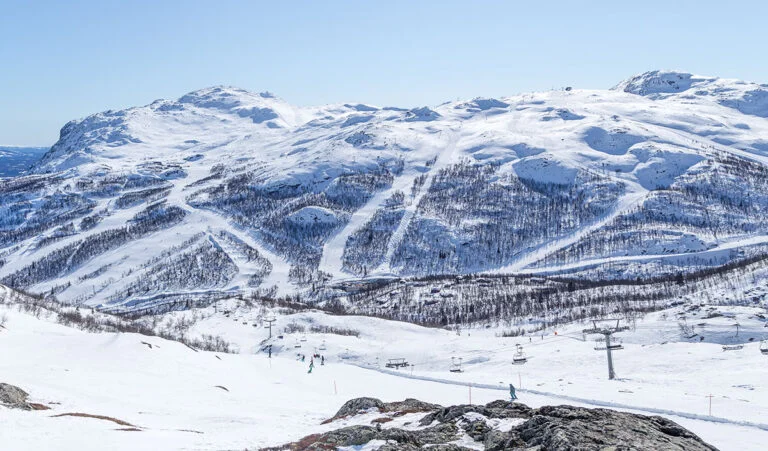
Sondre Norheim is said to be the father of modern skiing. In the late 19th-century, he began using stiff ski bindings so he could swing and jump with less risk of falling. His new ski design – the Telemark ski – led to the modern skis we know and love.
But skiing itself goes much further back. An ancient rock carving at Rødøy in northern Norway shows that people used a form of skis to get around in the Norwegian mountains as long ago as 4,000 years.
Finnmark is home to the oldest preserved ski ever found, at an incredible 2,300-years old. To top it off, many Norwegian words including ski and slalom originated right here in Norway.
12. Norway rocks the Winter Olympics
Perhaps unsurprising given the facts above, Norway is the world's most successful nation at the Winter Olympic Games. Despite having little more than 5 million residents, Norway has won more medals than any other country in Olympic history.
Following the 2018 games in South Korea, Norway's total medal haul stood at 368, including 132 golds, from the 23 competitions. Their closest rivals in the table are the United States (305/105) and Germany (238/92).
The country hosted the event twice: In 1952 in Oslo, and in 1994 in Lillehammer. The legacy of the latter competition continues to this day, and the Norwegian Olympic Museum in Lillehammer is one of the country's most interesting museums.
Another fun Olympic-related fact about Norway: King Olav V won an Olympic gold medal in sailing in 1928. He was an active sailor throughout his life and his reign.
13. Europe's biggest herd of wild reindeer lives here
Although it may surprise you to learn they don't live in the Arctic! The herd roam Hardangervidda, Europe's biggest mountain plateau. The National Park includes vast plateaus, lush valleys, high mountains, distant glaciers, waterfalls and stunning fjords.
The number of wild reindeer in winter totals around 25,000 animals, of which up to 7,000 are found on Hardangervidda.
For centuries, wild reindeer used to roam freely across Norway but as a result of extensive hunting, they were driven into the mountainous areas of south-central Norway in the late nineteenth century.
14. Norway has a volcano!
But don't panic, it's nowhere near the country's biggest cities and won't impact Norway's mainland if it were to erupt. That's because Norway's only active volcano is on the island of Jan Mayen in the Norwegian Sea.
It's about half-way between Norway and Greenland, north of Iceland, and is considered together with Svalbard for administrative purposes by the Government.
Although no permanent residents live anywhere near the 7,306 feet (2,227 m) Beerenberg volcano, research scientists regularly visit the island and even some cruise ships stop by.
15. Norway isn't called Norway!
At least, not in Norwegian. Norway is the name of the country in the English language. In Norwegian, the country is called Norge. In the lesser-used nynorsk variety of Norwegian, the spelling is Noreg.
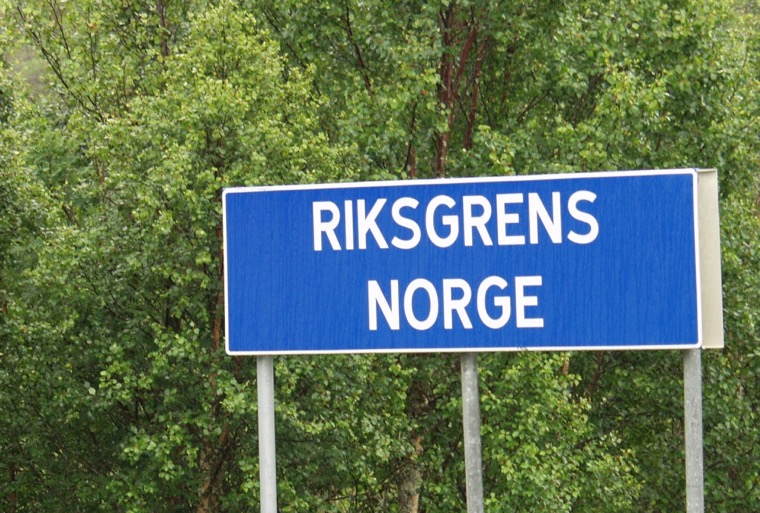
In fact, the full name of the country is actually the Kingdom of Norway. In Norwegian, this is written as Kongeriket Norge, or Kongeriket Noreg in nynorsk.
Other names for the country include Norwegen (Germany), Noruega (Spanish & Portuguesre), Norvegia (Italian), Norvège (French), and Norja (Finnish). Meanwhile, the Norwegian language is known in Norway as norsk.
16. Norway gave the world the cheese slicer
You're welcome, world! The cheese slicer was invented way back in 1925 by Thor Bjørklund and has become a staple of all Scandinavian kitchens, and many others around the world.
While a lot of cheese is sold pre-sliced, many people still buy blocks of cheese and use the invention that has changed little in almost 100 years.
17. Oslo is Norway's most diverse city
Of the 648,000 people in Oslo, 190,000 were born to immigrants or are immigrants themselves. That's nearly 30% of the city's population, compared to around 15% in the country overall.
The largest ethnic minority in Oslo is Pakistani, followed by immigrants from Sweden, Somalia, and Poland. The diversity of Oslo was among the many emerging topics addressed in the Norwegian TV youth drama Skam. It found fans across the world thanks to unofficial translations on YouTube.
For many years, Oslo was Europe's fastest growing city in percentage terms, but that growth has begun to level off. During the first half of 2017, more people moved out of Oslo than moved in, for the first time in several years.
18. Norway isn't powered by oil
Sure, Norway's oil and gas industry has powered the economy, but it doesn't power the nation's homes. Around 98% of Norway's domestic power usage is drawn from hydroelectric power plants.
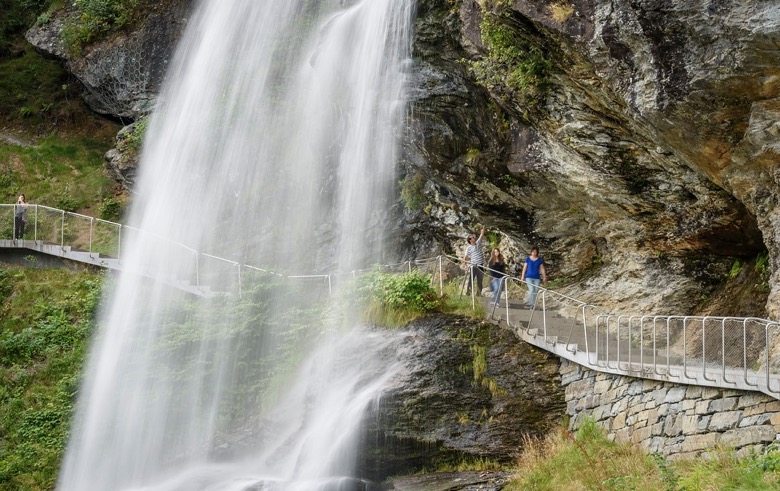
Although Norway is only ranked 9th globally based on the percentage of domestic power sourced from renewable sources, the country actually generates more electricity than all of the eight countries ranked above them – combined!
While the Norwegian government says Norway will be carbon neutral by 2030, that only takes into account domestic emissions, and not the much larger amount embedded in its oil and gas exports.
The government has also tightened energy-efficiency standards for buildings, and has encouraged firms and homeowners to burn wood and other forms of biomass for heat and power, instead of fossil fuels.
19. The Colonel-in-Chief of the Norwegian King's Guard is a Scottish penguin
Wait, what? Yes, you heard right. Brigadier Sir Nils Olav has held the title since 2005, but the involvement goes back to 1972 when the regiment adopted a penguin from Edinburgh Zoo, and to the zoo’s opening in 1913 when Norway presented it with its first king penguin.
The name ‘Nils Olav' and ranks in the Norwegian military have been passed down through three king penguins since 1972. The current holder is Nils Olav III.
It’s not as unique as you may think. William “Billy” Windsor (a goat) served in the British Army, while Syrian brown bear Wojtek was enlisted in the Polish army as a private, and subsequently promoted to corporal.
20. No-one knows how long Norway's coastline is!
It's known throughout the world for its jagged mountains and stunning fjords, but believe it or not, no-one knows for sure just how long Norway's epic coast is.
The somewhat counterintuitive observation that the coastline of a landmass does not have a well-defined length is known as the coastline paradox.
Because of the fractal nature of a coastline, you can only define its length by using units of a specific length. When the unit length differs, the total length differs – and the difference can be massive.
Stretching all the way from the Oslofjord down to the sunny south, in and out of the many western fjords and then stretching out for many, miles northward before bending around the top of the Scandinavian peninsular to meet with Russia, only one thing's for sure: It's very long!
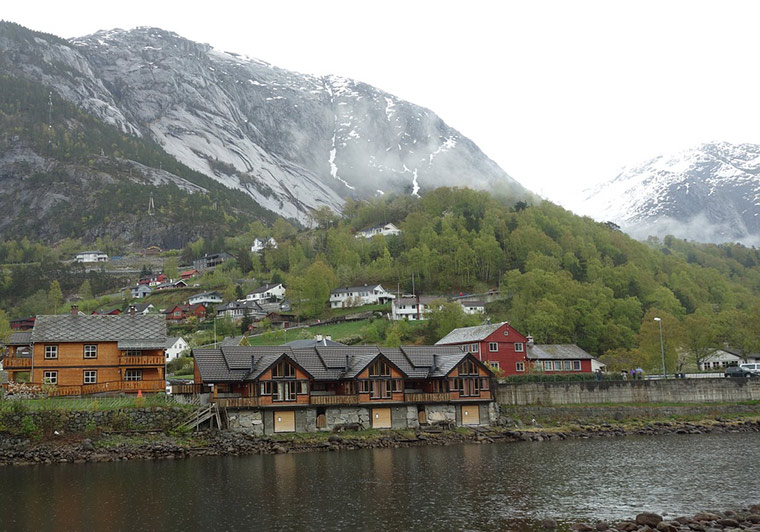
Arguably the best way to enjoy the Norwegian coastline–if you don't have your own boat that is–is by taking the full coastal voyage from Bergen to Kirkenes and back again.
On the full 11-night trip, you'll get up close to some of the country's most iconic scenery including the Lofoten Islands.
21. Norway supplies London with a Christmas tree every year
And it's not just any tree. To say thank you for their help during World War II, the city of Oslo sends Britain a tree every Christmas. The tall Norwegian spruce from the Oslo forest is placed prominently in Trafalgar Square.
The tree, decorated in a typical Norwegian style with white lights, provides a focal point for the carol-singing festivities that take place on the square throughout the Christmas period.
22. Norway was neutral during the First World War
After the First World War broke out, Norway declared its neutrality. Despite this, Norway still made trade agreements with Great Britain and in 1917 allowed them to take control of Norwegian sea vessels.
Norway’s impartial position was in place until April 1940, just two months into the Second World War, when the Germans invaded.
The Scandinavian country was an attractive location for Adolf Hitler, who was interested by its many accessible sea ports and the extraction of iron ore from nearby Sweden.
The Norwegian Royal Family and the government were hastily transported to London, where they managed to form a government in exile and organise the Norwegian war effort from afar.
23. Roald Dahl spoke Norwegian
Writer Roald Dahl may have been born in Wales, but he was the son of Norwegian parents. He was best known for his children’s short stories, most notably The BFG, James and the Giant Peach and Charlie and the Chocolate Factory.
The last mentioned was inspired by Norway’s most famous chocolate brand, Freia. Dahl is said to have taken inspiration for the story from the Freia chocolate factory.
However, the BBC recently claimed Dahl was inspired by Cadbury running tasting tests at Dahl's boarding school in Derbyshire. Perhaps there's some truth in both tales.
24. Harry Hole’s favourite Norway hangouts are real
Jo Nesbø is Norway’s leading crime fiction writer. His dark and moody portrayal of the country’s most dangerous individuals, particularly its murderers, is captured in detail in the Harry Hole series of crime thrillers.
Most of the places featured in the series are based on real-life locations. Visitors to Oslo can follow in footsteps of detective Hole: take a stroll down his home residence on Sofies Gate in Bislett, visit his workplace, the Oslo district police station (Politihuset), or simply wander through Frogner Park on a winter’s day.
25. Norway’s capital wasn’t always called Oslo
Founded in 1040, its name was originally spelt Ânslo or Áslo. In 1624, after a great fire destroyed large parts of the city, the decision was made to move and rebuild it closer to Akershus Fortress.
The move also involved changing the name to Christiania in honour of the ruling monarch, King Christian IV.
Between 1814 and 1905, the city existed as a co-official capital of the union between Norway and Sweden. In 1877, after the spelling reform, the city’s name was altered to Kristiania. It remained that way until 1925, when it returned to its origin name, Oslo.
The city also has a nickname, Tigerstaden (the City of Tigers). Named so in 1870 by Norwegian writer Bjørnstjerne Bjørnson who referred to the city as an inhospitable environment (cold and uninviting). There is statue of a tiger outside Olso Central Station in honour of the reference.
Enjoyed this article? Why not share it on Pinterest? There's a pin for that. Just hit that social sharing button to get started.

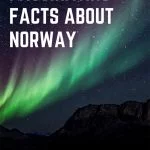

loved it hope my family and friends will look at so they can see where I what a beautiful country I come from
My daughter moved to Norway in 2010 with her then husband. She continues to live in Norway and loves her adopted homeland.
Incredible amount of respect and care to the Penguin!
Kings and other penguins are native to the southern oceans, not Scotland. See https://southernconeguidebooks.blogspot.com/2016/09/where-are-penguins.html
No one is saying the penguin is native to Scotland; it came from a Zoo in Scotland–which makes it even funnier. I mean it would make sense for Argentina or Chile to give them a penguin but its really random that it’s from Scotland.
Other interesting facts: Norwegian ships carried approx. 20% of oil imports and 8% of dry goods to Britain during the war. When Norway was occupied the puppet government Oslo ordered Norwegian ships in international waters to call back to Norway or an Axis port. At the same time some Norwegian shipowners set of an org. in London called Nortraship. They suggested captains join up to the allied cause. !00 % of shipowners/ captains choose the latter.
Norwegian pilots operated two Spitfire and one or two Mosquito squadrons in England during the war. They were trained in Canada.
My father is a Hagen! Oscar Hagen, born in Moss. 1890. Grandfather: Emil Laurtiz Ottoson Hagen–1853 in Elverun, great grandfather, Otto Carelius Olsen Hagen, 1810 in Elverun. Are we related?
my grandmother is norwegian and has the same birthday as the current king
same day year and month
She Most be a special woman i believe a Queen 😍
I am from norway. Its just cool to get to know things i didn’t know.
Wow! quite incredible, I need help to relocate to Norway. I’m a Nigerian who wishes to study in Norway and be of good repute and to contribute positively to the country at large
I am enjoying learning all of these facts about Norway. I think it is a beautiful country. I have Norwegian blood in me. With Covid I am home more than ever. I am reading on all the DNA blood lines that showed up in my test. A lot to take in. Thank You David for all of your work. I do appreciate your teachings.
I would love to visit Norway after covid 19 normalcy. I am fascinated by the culture, beauty and the awesome vibe I get by reading watching YT.
Love from America
I lived in Japan in the late ’60s and early ’70s, and salmon sushi was my favorite kind. That and eel!
wait, Norway is Scandinavia? cause if it is I’m from Norway. (thats new for me cause I’m doing a poster bout Norway for school)
It’s in Scandinavia, a region which comprises Sweden, Denmark and Norway.
I am of Norwegian descent on both sides of my family. I was stationed in Germany during a portion of my military service. I have training and worked
as an engineer. I visited and worked in Norway six times since 1963. Relatives from Norway have visited me and my family in Minnesota on several occasions. My wife and I plan to visit family in Bergen and on the islands of Tysnes and Stord at least one more time before we get too old.
What is unsatisfactory about my comment above?
What is unsatisfactory about my earlier comment ??
What do you feel is immoderate about my earlier comment?
Nothing. All comments are held for moderation. Thanks for your patience, lol.
I’m reading through the comments a year later, because…why not? And came to your reply and it hit right and made me smile. So, thank you for the Norway Nutshell -enjoyable read and sounds like a beautiful place.
Question if you ever get back to it…ugly sides? Crime? Health? Poverty?
On my wish list of places to visit.